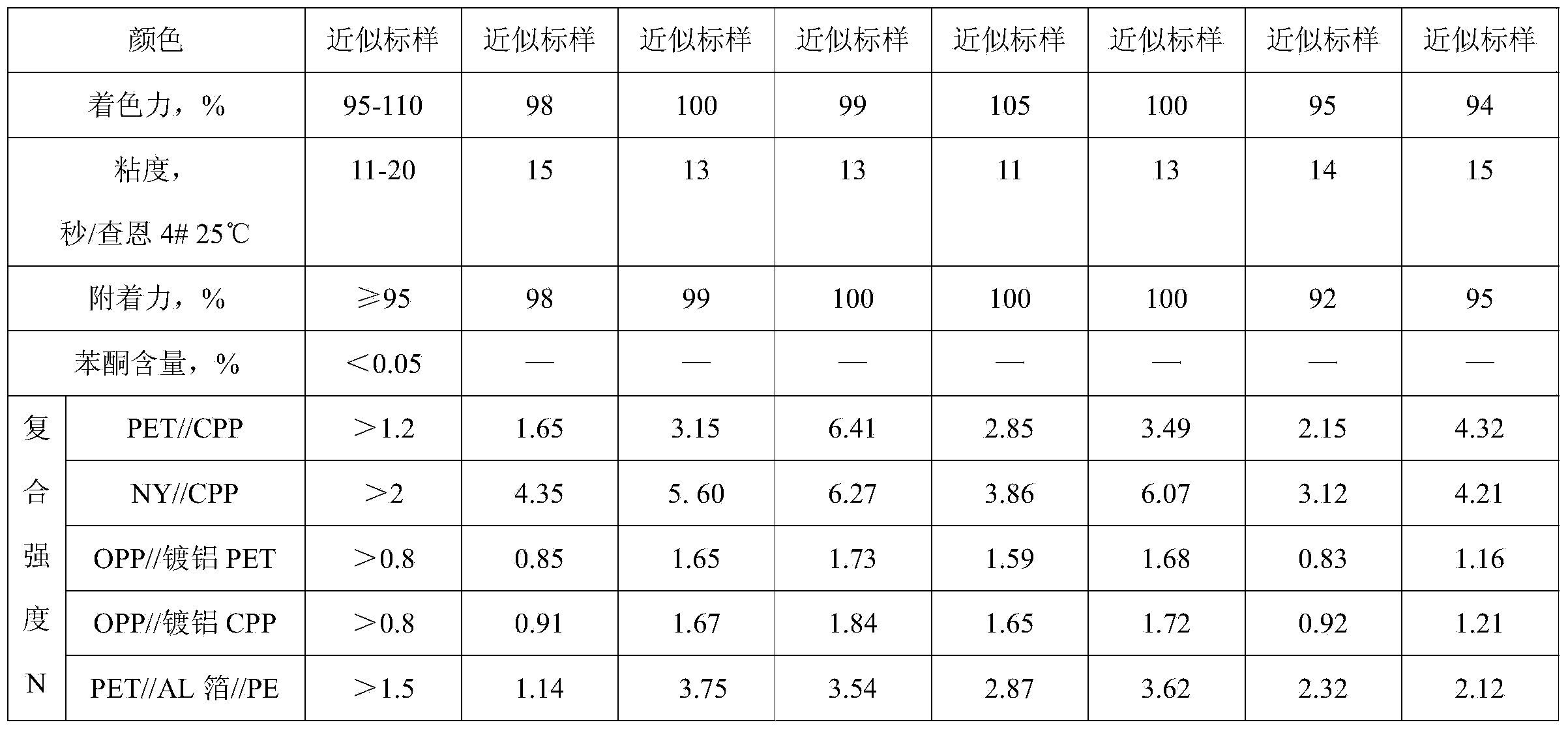Ester-soluble polyurethane compound printing ink with high composite strength and preparation method thereof
A technology of composite strength and polyurethane, which is applied in the direction of ink, household utensils, applications, etc., can solve the problems of affecting the central nervous system of the brain, poor compatibility, and strong irritating odor, and achieves strong printing adaptability, high transparency, and internal The effect of poly strength and strong adhesion
- Summary
- Abstract
- Description
- Claims
- Application Information
AI Technical Summary
Problems solved by technology
Method used
Image
Examples
Embodiment 1
[0034] A preparation method of amide-modified polyurethane resin in an ester-soluble polyurethane composite ink comprises the steps:
[0035] (1) Synthesis of hydroxyl-terminated amide polyester: Weigh each raw material according to the set ratio, put 500g of adipic acid and 376g of 2-methyl-1,3-propanediol into the reaction kettle, and slowly heat up to The temperature of the kettle reaches 140°C for dehydration; when the dehydrated water reaches 120g, continue to heat up and start vacuuming for vacuum polycondensation, gradually increase the vacuum degree of the system, and reach -0.098MPa within 2 hours, control the temperature in the kettle to 230℃, wait for the After the acid value of the resin solution is less than 8mgKOH / g, cool down to 170°C; add 59.64g of phthalic anhydride, gradually increase the temperature until the acid value is 35mgKOH / g, then cool down to 100°C; add 10.42g of ethylenediamine, at 120°C Conditional reaction for 4 hours; then add 22.5 g of ethanola...
Embodiment 2
[0039] A preparation method of amide-modified polyurethane resin in an ester-soluble polyurethane composite ink comprises the steps:
[0040] (1) Synthesis of hydroxy-terminated amide polyester: Weigh each raw material according to the set ratio, and weigh 976g of adipic acid, 144g of 2-methyl-1,3-propanediol and 1,4-butanediol Put 577g into the reaction kettle, and slowly raise the temperature until the temperature of the kettle reaches 160°C for dehydration; when the dehydrated water reaches 240g, continue to raise the temperature and start vacuuming for vacuum polycondensation, and gradually increase the vacuum degree of the system until it reaches -0.098MPa within 3 hours. The internal temperature is 240°C. After the acid value of the resin liquid in the kettle is less than 8mgKOH / g, the temperature is lowered to 170°C; after adding 146.17g of phthalic anhydride, the temperature is gradually increased to react until the acid value is 40mgKOH / g, and then the temperature is l...
Embodiment 3
[0044] The preparation method of the amide-modified polyurethane resin in the ester-soluble polyurethane composite ink provided in this example is basically the same as that of Example 1, except that: 665 g of isophthalic acid, 2-methyl-1,3-propanediol 440g, phthalic anhydride 76g, propylenediamine 13.7g, 2-amino-2-methylpropanol 46.1g The synthetic molecular weight M is 2800, the hydroxyl value is 40mgKOH / g, the acid value is 0.5mgKOH / g terminal hydroxyl group Amide polyester; 66.87g of isophorone diisocyanate, 500g of hydroxyl-terminated amide polyester and 378g of ethyl acetate to synthesize amide-modified polyurethane prepolymer, the content of -NCO is 0.9%; 6.92g of hexamethylenediamine, ethyl acetate 258g, isopropanol 258g, amide-modified polyurethane prepolymer 500g chain extension to obtain polyurethane finished product, the average molecular weight M of gained modified polyurethane resin is 28000, viscosity 960mpa·s, and solid content is 30%.
PUM
| Property | Measurement | Unit |
|---|---|---|
| Hydroxyl value | aaaaa | aaaaa |
| Acid value | aaaaa | aaaaa |
| Viscosity | aaaaa | aaaaa |
Abstract
Description
Claims
Application Information
 Login to View More
Login to View More - R&D
- Intellectual Property
- Life Sciences
- Materials
- Tech Scout
- Unparalleled Data Quality
- Higher Quality Content
- 60% Fewer Hallucinations
Browse by: Latest US Patents, China's latest patents, Technical Efficacy Thesaurus, Application Domain, Technology Topic, Popular Technical Reports.
© 2025 PatSnap. All rights reserved.Legal|Privacy policy|Modern Slavery Act Transparency Statement|Sitemap|About US| Contact US: help@patsnap.com


